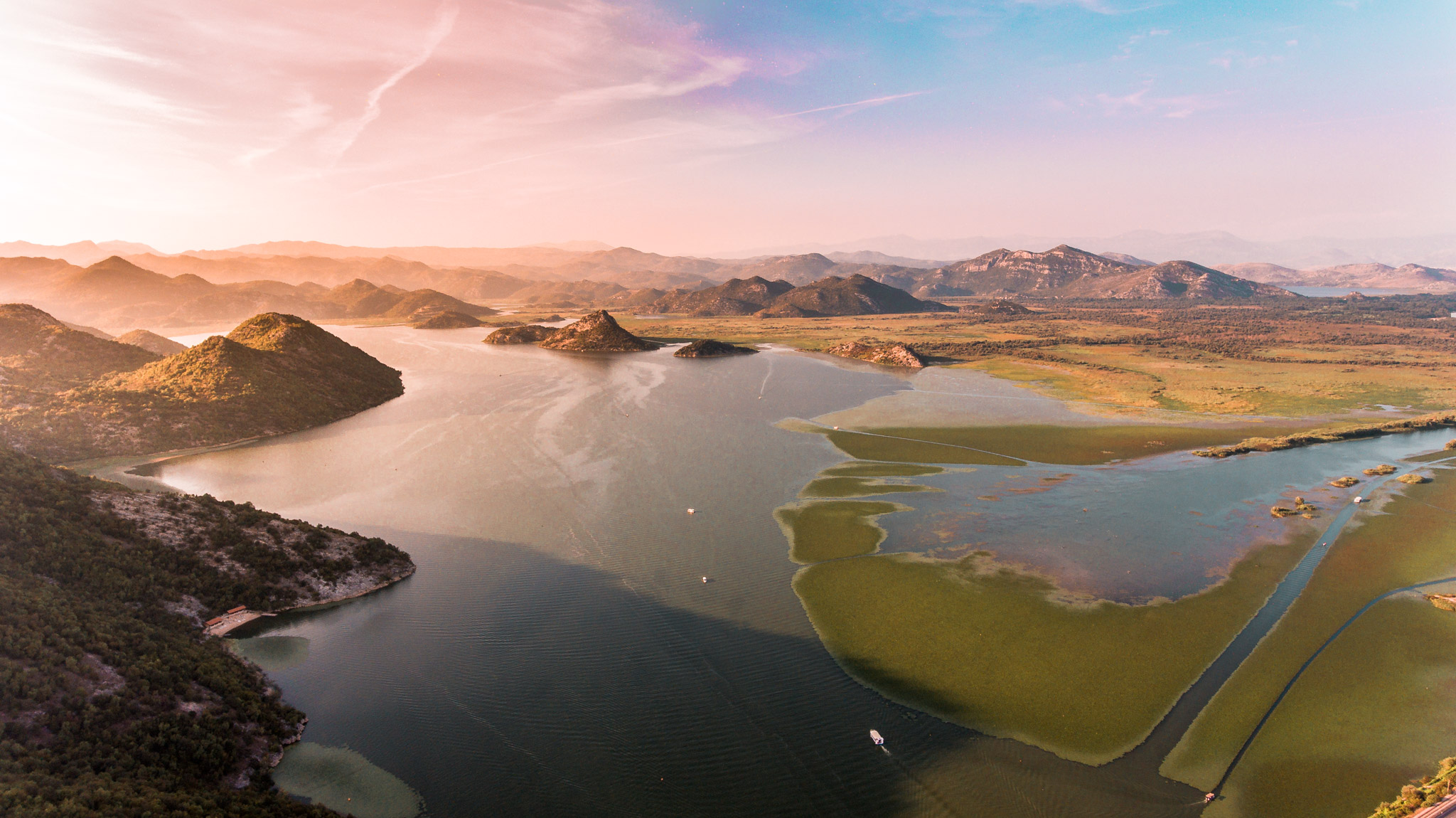
Lake Skadar
- over 6 years ago
- 55 VŪZ
1 - 2
- Report
Lake Skadar is the largest lake in the Balkan Peninsula with a surface area that seasonally fluctuates between 370 km2 (140 sq mi) to 530 km2 (200 sq mi).[1] Lake Skadar itself is located on the western Balkan with approximately two-third (229 km2 (88 sq mi)) of its surface belonging to Montenegro and about one-third (142 km2 (55 sq mi)) to Albania.[1] The lake’s water level also varies seasonally from 4.7 to 9.8 m above sea level.[1] The lake extends in the NW-SE direction, and it is approximately 44 km long.[1] The Bojana River connects the lake with the Adriatic Sea, and the Drin River provides a link with the Ohrid Lake.[1] The lake is a cryptodepression, filled by the river Morača and drained into the Adriatic by the 41 km (25 mi) long Bojana (Albanian: Buna), which forms the international border on the lower half of its length. The largest inflow is from the Morača, which provides about 62% of the lake’s water.[1] Total drainage area is 5490 km2.[1] There are additionally some fresh water sources at the lake bottom. A characteristic feature of Lake Skadar’s water balance is the high inflow from a number of temporary and permanent karstic springs, some of which are sublacustrine in cryptodepressians (so called ‘oko’).[1] The Southern and southwestern sides of the lake are rocky, barren and steep, having bays in which the sublacustrine springs, are usually to be found.[1] On the northern side there is an enormous inundated area, the boundaries of which change as water levels fluctuate.[1] Some small islands like Beška, with two churches on it and Grmožur, a former fortress and prison can be found on the southwest side of the lake. The climate type is hot-summer Mediterranean climate with dry summers (Csa), under Köppen climate classification.[1] Lake Skadar National Park IUCN category II (national park) Lake Skadar.png Lake Skadar and surrounding area Location Albania, Montenegro Area 400 km2 (150 sq mi; 40,000 ha) Established 1983 The Montenegrin part of the lake and its surrounding area were declared a national park in 1983. The Albanian part has been designated as a Managed Nature Reserve. In 1996, by Ramsar Convention on Wetlands, it was included in the Ramsar list of wetlands of international importance.[4] Near the mouth of Rijeka Crnojevića, 11 m (36 ft) below the surface of the water there is a well preserved wreck of the steamboat Skanderbeg sank by Partisans in 1942, during the Second World War.[5]